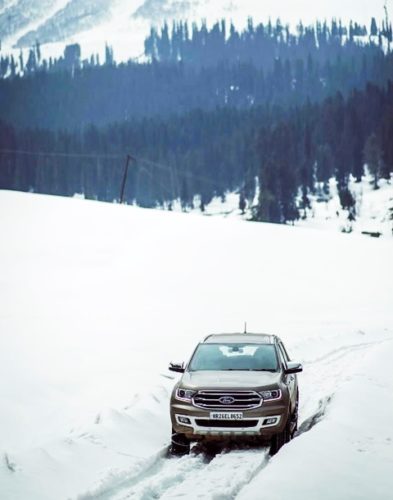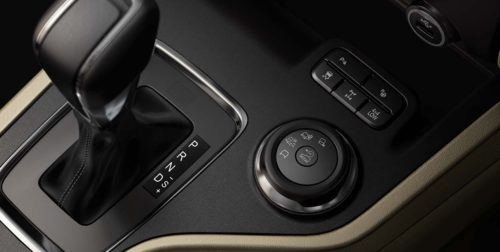How Do Different Terrain Modes In Modern Cars Work?
An SUV is meant to go anywhere – over rock, sand, snow, grass, mud, gravel, grass —not just paved roads! A four-wheel-drive system, abundant torque, and chunky tyres do help with this, but are they adequate solutions for every kind of terrain?
Unfortunately not. You see, navigating varied terrain demands many nuances from the driver, who may need to change gear shift patterns, accelerator modulation, and steering style. In a modern automatic car, computerised systems take away some of this control. To counter that, SUVs are fitted with terrain modes that change the vehicle’s capabilities depending on the mode selected.
The Ford Endeavour is kitted with the first-in-segment Terrain Management System, an advanced technology designed to provide maximum traction, control, and performance on all surfaces. But how exactly does a terrain management system work? To answer that, we need to start by understanding the functioning of a traction control system.
How Does A Traction Control System Work?

A traction control system forms the foundation for a terrain management system. These are computerised systems that ensure that all driven wheels receive adequate power. Sensors constantly monitor the speed of each wheel and feed this data into a computer that compares it to the speed of the vehicle. If this computer notices that a certain wheel is moving slower than the vehicle, it sends more power to the wheel, and if it realises that a wheel is spinning faster than the vehicle is moving, it applies brakes to that wheel.
By doing this, a traction control system ensures that power is being sent to wheels that are in contact with the ground, allowing the vehicle to stay on the move while minimising wheel spin in low traction conditions.
How Does A Terrain Management System Work?

The Ford Terrain Management System builds on top of the traction control system. The system can, depending on the terrain selected, alter several vehicle variables. This includes accelerator responsiveness, gear shift protocol, braking intervention, and electronic stability program functioning.
Different terrains, as we noted, demand different vehicle behaviour:
- Sand: Driving on sandy terrain requires the car to maintain momentum while the wheels are spinning quickly. Slow wheel revolutions will cause the vehicle to get bogged down and stuck. As such, the terrain management system will allow more wheel-spin, hold gears higher into the rev range, and offer increased throttle sensitivity
- Snow/mud: Snow and mud both offer low traction, low surface resistance, and high levels of slipperiness. Sudden acceleration or braking on either of these surfaces can cause a vehicle to start sliding and lose control. In this mode, the terrain management system will reduce the sensitivity of the throttle and braking, limit or cut off the electronic stability program (which might interfere with the unique way a vehicle has to be driven on such terrain), and optimise the traction control system to avoid wheel-spin
- Rock: While driving on rocky terrain, the need of the hour is torque – and lots of it. The traction control system plays a crucial role while navigating through rocky terrain. The unevenness of the ground might frequently cause one or more wheels to lose traction, but the traction control system can send power to the wheels that do have traction to make sure the vehicle can move on. Additionally, the terrain management system changes the gear shift protocol to keep the car in first gear so as to provide maximum grunt
Who Needs To Use Terrain Modes?

If you have an SUV with an automatic transmission and you plan on taking it off-road, you need terrain modes. Gear shift protocols are crucial elements of successful off-roading. Automatic gearboxes take away the control of these protocols from the driver; terrain modes bring it back. Driving on different terrains requires different approaches, and terrain modes help you do that.
The Ford Endeavour’s Terrain Management System allows it to go anywhere and everywhere. Together with features like Hill Launch Assist, Hill Descent Control, and Rollover Mitigation, this system makes the Ford Endeavour a true-blue go-anywhere (safely) vehicle. Even if you don’t foresee yourself off-roading, having terrain modes helps. You never know what terrain you might find yourself on, and in such an instance, it’s better to be safe than sorry.
Subscribe to our newsletter
Subscribe to our newsletter to stay upto date with latest news, offers and much more



